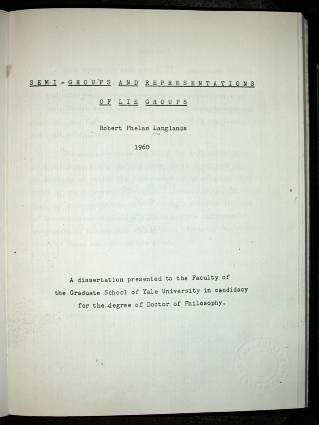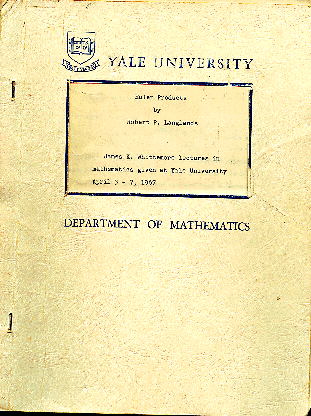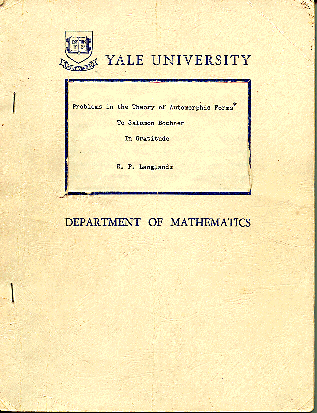Semi-groups and representation theory
Submitted by admin on

Submitted by admin on

Submitted by admin on

Editorial comments: The letter to Weil included a number of striking conjectures which eventually changed much of the direction of research in automorphic forms. Some of their consequences were explained in a graduate course given at Princeton in the spring of 1967, and then things were put in a somewhat wider context in a series of lectures at Yale later that Spring. These notes were previously published as the first of the Yale Mathematical Monographs.
Submitted by admin on
Submitted by admin on

Editorial comments: The conjectures made in the 1967 letter to Weil were explained here more fully. This appeared originally as a Yale University preprint, later in the published proceedings of a conference in Washington, D.C. Lectures in modern analysis and applications III, Lecture Notes in Mathematics 170, Springer-Verlag, 1970. The lecture is dedicated to Salomon Bochner.
Submitted by admin on
Editorial comments: In January of 1967, while he was at Princeton University, Langlands wrote a letter of 17 hand-written pages to Andre Weil outlining what quickly became known as `the Langlands conjectures'. This letter even today is worth reading carefully, although its notation is by present standards somewhat clumsy. It was in this letter that what later became known as the `\(L\)-group' first made its appearance, like Gargantua, surprisingly mature.
Submitted by admin on
Submitted by admin on
Editorial comments: This originally appeared as a supplement to an article by A. Borel and H. Jacquet in Automorphic forms, representations, and L-functions, Proceedings of Symposia in Pure Mathematics XXXIII, AMS, 1979.
Submitted by admin on
Editorial comments: The letter to Weil that saw the birth of the \(L\)-group was written in January 1967. Somewhat later that same year, Roger Godement asked Langlands to comment on the Ph.D. thesis of Hervé Jacquet. His reply included a number of conjectures on Whittaker functions for both real and \(p\)-adic reductive groups. These were later to be proven, first in the \(p\)-adic case by Shintani for \(\mathrm{GL}_n\) and Casselman Shalika in general, and much later in the real case by a longer succession of people.
Submitted by admin on
Submitted by admin on